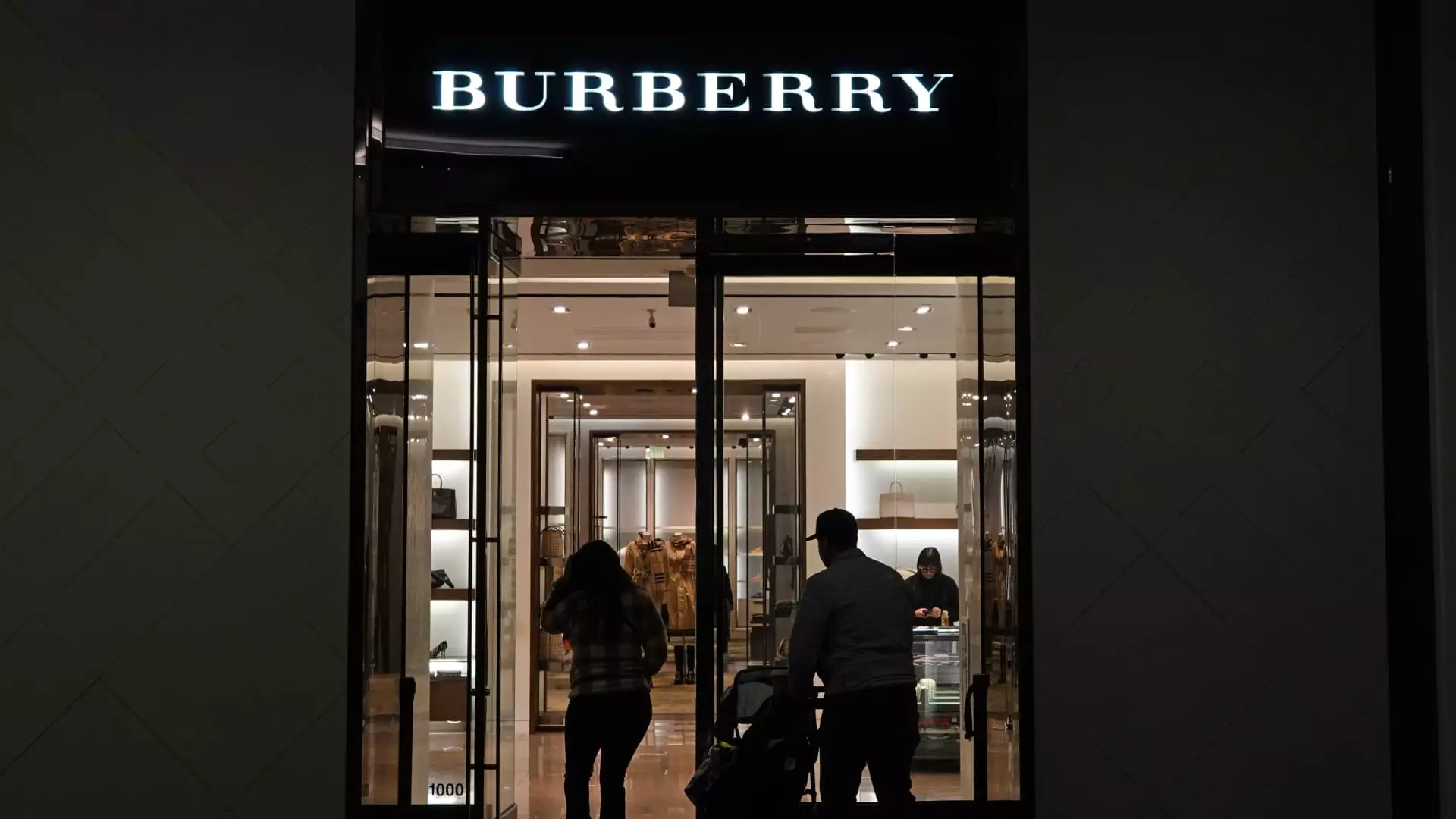Burberry, a storied name in British fashion, has recently experienced a surprising uptick in its stock value, reflecting a cautious but optimistic revival amidst a challenging retail landscape. Following the release of its fiscal third-quarter results, shares of the luxury brand soared by 16%, revealing signs of recovery under the leadership of CEO Joshua Schulman. As the brand navigates its way out of a prolonged slump, this article will delve into the factors influencing this resurgence, the existing challenges, and the strategic plans ahead for Burberry.
The sharp increase in Burberry’s stock price came after the company unveiled a sales decline of just 4% during the holiday shopping season, a figure that starkly contrasted with analyst expectations of a 12% drop. This detail is crucial; it suggests consumer sentiment may not be as negatively inclined as previously thought, and that Schulman’s strategy is beginning to yield tangible results. Total revenue for the fiscal quarter reached £659 million ($816 million), a decline of 7% year-on-year—this figure, while less than desired, indicates a potential stabilization compared to earlier far more drastic downturns.
The dip in sales across the Asia Pacific and European regions, where figures dropped 9% and 2% respectively, raises questions about global economic conditions and consumer preferences. However, a bright spot emerged with a 4% increase in sales within the Americas, hinting at a resurgence in American consumer spending—an important lifeline for luxury brands like Burberry as they strive to regain their footing.
Joshua Schulman’s appointment as CEO marked a pivotal turning point for Burberry. With an urgent mandate to “course correct,” Schulman’s vision encompasses restoring the brand’s prestige while ensuring it remains relevant in today’s fast-evolving market. His initiatives, encapsulated under the “Burberry Forward” strategy, aim to create a renewed brand narrative and improve long-term financial performance. Schulman’s commitment to reinvigorating brand desire is encouraging, yet it underlines an ongoing challenge—the transformation journey is hardly complete.
Chief Financial Officer Kate Ferry emphasized that while the company aspires to return to its past successes, they have not established a definitive timeline for achieving these goals. Her caution is prudent; the luxury market remains capricious, and the need for steady recovery is paramount. Analysts believe that Burberry must focus on core product categories and streamline store layouts, areas where early signals of improvement have already been noted.
Burberry’s latest results align with a broader positive trend in the luxury sector, where brands like Richemont reported record sales. This broader context suggests that luxury brands may finally be experiencing an uptick after a prolonged period characterized by caution and inventory overhang. Factors contributing to this improvement include shifting consumer behaviors, a bolstered dollar, and macroeconomic trends that favor luxury spending.
Analysts note that Burberry’s recent actions—such as aggressive markdowns—have played a role in clearing excess inventory and enhancing sales performance. As consumer confidence rebuilds, so too does the opportunity for Burberry to connect with a more discerning clientele eager for authentic brand experiences.
Despite the recent leap in stock price and sales performance, Burberry’s challenges remain significant. The brand’s transformation has only just begun, and Schulman’s team faces the daunting task of ensuring that their strategies resonate on a global scale. With evolving consumer attitudes and increased competition from both established and up-and-coming luxury maisons, Burberry must continuously innovate.
Sustaining momentum is crucial. As the retail environment becomes more competitive, the risk of slipping back into underperformance looms large. However, the strategic initiatives launched under Schulman’s tenure provide a foundation upon which Burberry can build. If the brand successfully marries its rich heritage with contemporary consumer expectations, it can emerge stronger and more valued in the luxury ecosystem.
While Burberry’s latest quarterly results provide hope and indicate the possibility of a turnaround, the journey ahead remains laden with challenges. A calculated blending of innovation and tradition will be central to the brand’s success—a journey that requires careful navigation, as the luxury market continues to evolve in unpredictable ways.

